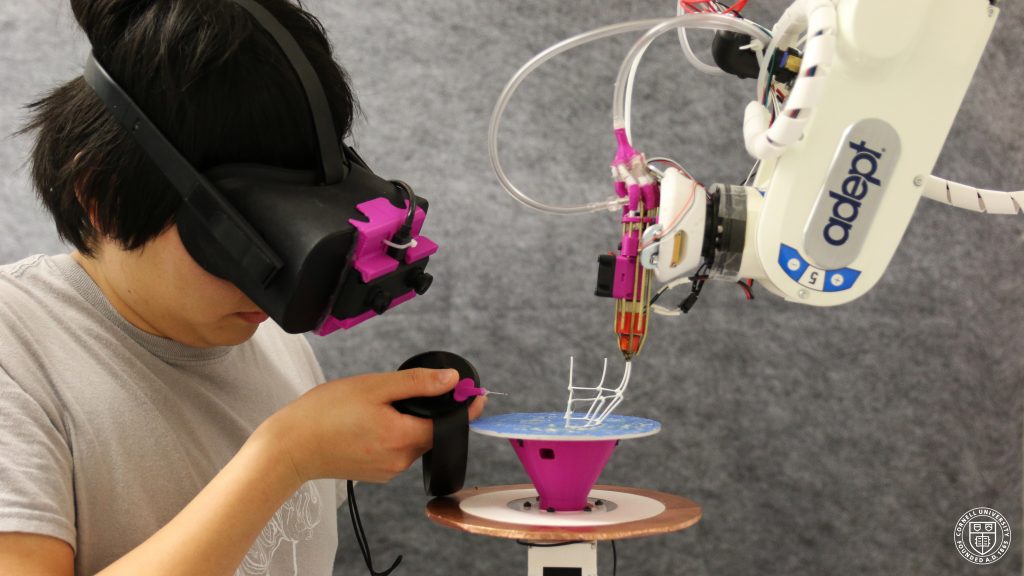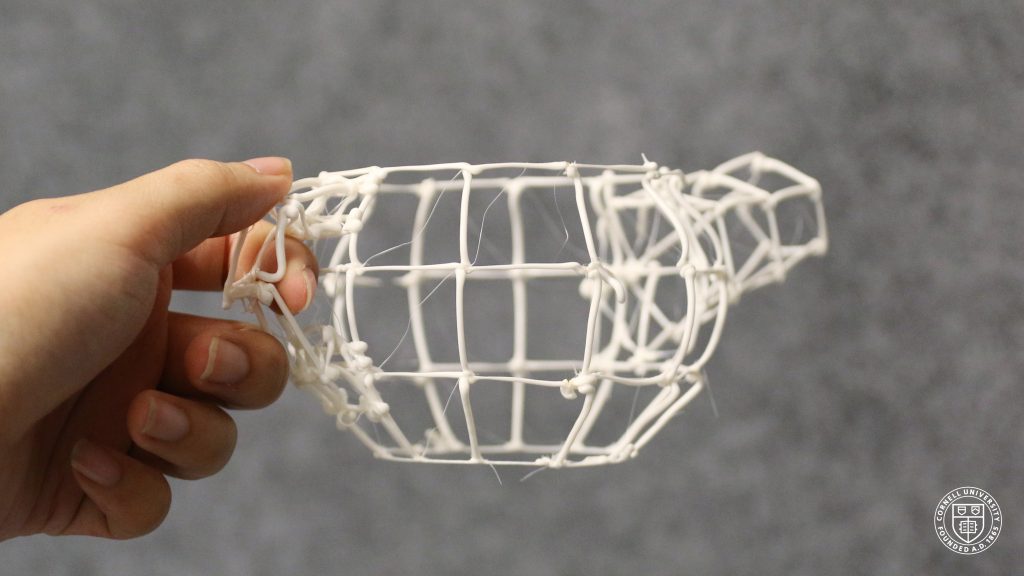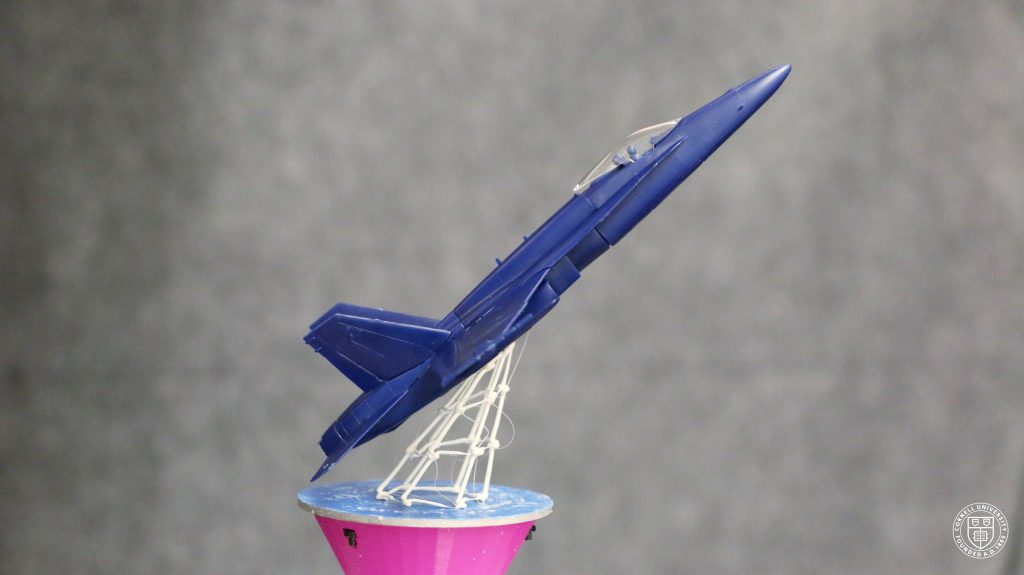The next industrial revolution (Industry 4.0) will be led by cyber-physical systems (CPS) integrating computation, networking, and manual processes. To this end, factories will rely more an more on collaboration between human employees and robots.
In a recent interview Sören Papsdorf, Head of Manufacturing Engineering at KUKA, said that he believed human-robot collaboration is “the future of robotics.” Across industry, robotic systems are used as aids for everything from part inspection and assembly, to machine management and the free-form construction of houses or metal parts.
In an experiment led by Cornell University, New York, researchers have developed a system laying the foundation for human-robot collaborative design titled RoMA: Robotic Modeling Assistant.
Drawing with air
RoMA is controlled by a designer using an augmented reality (AR) headset. Thanks to a Rhino plugin, the AR headset has in-built 3D modeling capabilities, that allows a user to create a digital design from primitive shapes, i.e. cylinders and spheres. The user virtually builds this model on a turntable in front of them. As the design is made, it is fed to a robotic arm that 3D prints the object as a basic wire-frame outline.

Huaishu Peng/Cornell
Interactive design
Though the results are fairly rudimentary, the system presents a number of intuitive features that could be vital for future AR design.
Through calibration, a designer’s fingertip can be used to virtually draw and pull new features of a 3D model such as the handle in the teapot below.

The flexibility of the process also means that it can be used to directly 3D print new structures onto existing surfaces. In one example, this feature is used to add a stand to a pre-made airplane model.

Eventually, the team hopes to be able to scale RoMA to 3D print larger objects, and to work more-freely with human-friendly robots.
Print on the Fly
RoMA is the development of a previous project from Cornell called WirePrint that allows designers to “Print on the Fly” and modify an object as it is being 3D printed.
RoMAwas developed at Cornell with the collaboration of researchers at the Hasso Plattner Institute, MIT CSAIL and the University of Central Florida. A supporting paper for the research, “RoMA: Interactive Fabrication with Augmented Reality and a Robotic 3D Printer“, is published online as part of the Proceedings of the CHI Conference on Human Factors in Computing Systems 2018.
It is co-authored by Huaishu Peng, Jimmy Briggs, Cheng-Yao Wang, Kevin Guo, Joseph Kider, Stefanie Mueller, Patrick Baudish and François Guimbretière.
Featured image shows AR design using RoMA and fingerprint calibration. Gif via
Huaishu Peng on YouTube


